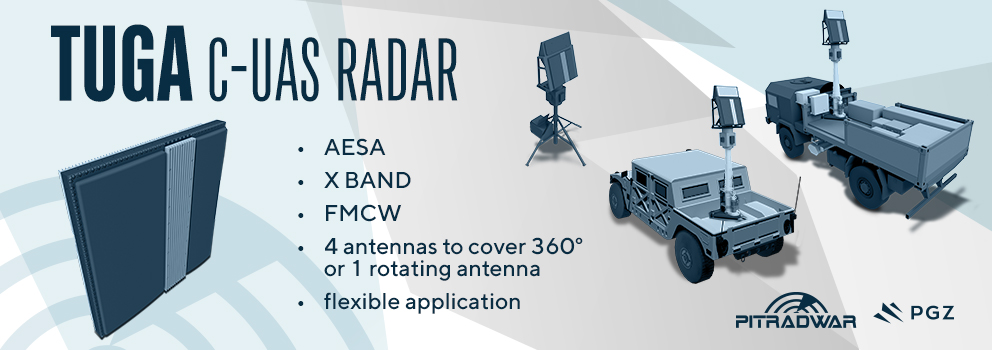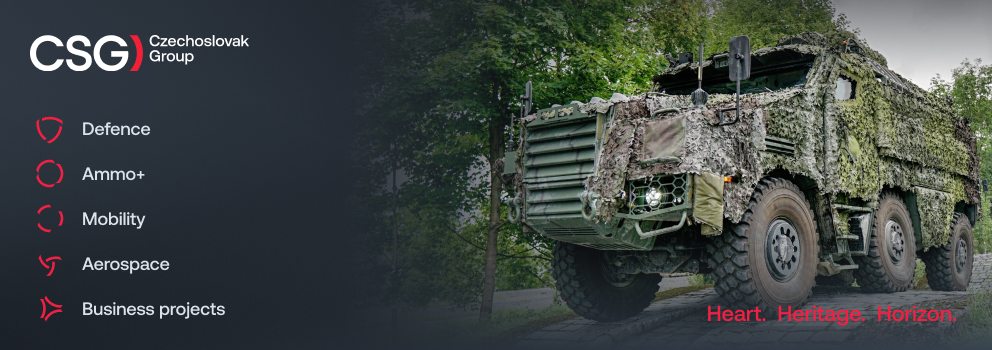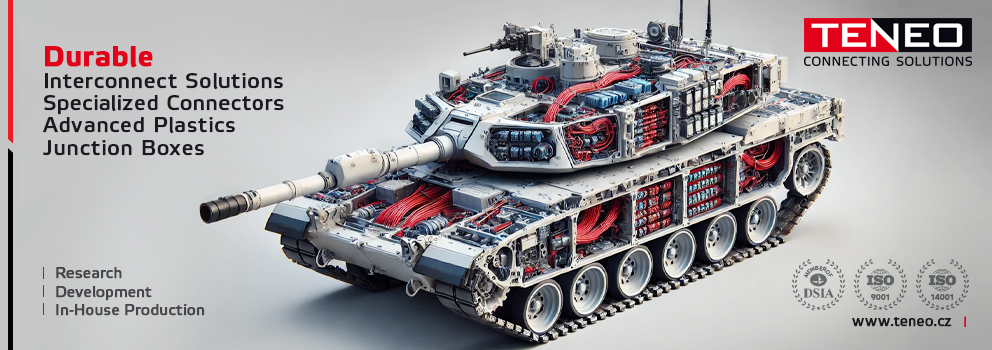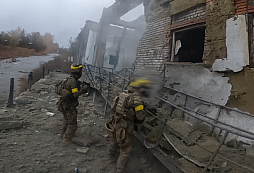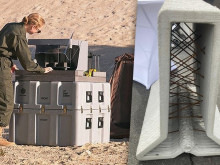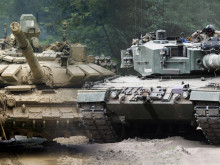The Return of Rocket Launchers to the Czech Army: Heavy Artillery Still Matters
The Czech Army is undergoing an extensive rearmament process, which should enable it to dispose of unsuitable equipment from the Soviet era and introduce modern weaponry that meets the requirements of the contemporary battlefield. Some acquisition programs are based on long-term plans, while others respond to current findings from the Ukrainian battlefield. The second category includes, among other things, plans to purchase larger numbers of unmanned aerial vehicles and, at the same time, systems to protect against them. However, the current "fashion" for drones sometimes leads to the extreme of underestimating other categories of technology that are supposedly "outdated." This applies, for example, to tanks and artillery, even though experience in Ukraine actually shows otherwise, as these types of technology continue to be of great importance and influence on the battlefield.
It is sometimes said that "suicide" drones are actually a substitute for artillery, as they can effectively perform the same or similar tasks. However, the reality of the Ukrainian battlefield tells a different story. There is no doubt that small unmanned aerial vehicles can be a useful addition to artillery and, in some situations, can perform the same tasks, but it is certainly not true that they can replace artillery, for several reasons. First and foremost is effective range, as small "suicide" drones rarely offer a range of more than 10 km, while today's howitzers commonly fire at a distance of around 40 km and rocket launchers generally offer an even longer range. The destructive power of cannons and rocket launchers is also generally much higher than that of drones, partly because submunition-filled container grenades and rockets can cover a larger area and thus take out a large number of "soft" targets.
Another important factor is time, because although there are some unmanned vehicles that can hit targets at distances similar to those of modern heavy artillery, it takes them many times longer to fly that distance. If a howitzer fires at a target 30 km away, the shell will hit its target in just a few tens of seconds, while a drone flying at a speed of 300 km/h will take 6 minutes to reach it. In the case of "time-critical" targets, this can obviously be of crucial importance. The operation of unmanned vehicles can also be greatly limited by adverse weather conditions and, of course, by enemy countermeasures, especially electronic jamming, as demonstrated once again by the war in Ukraine, where there is a constant "battle" between drone control systems on the one hand and various electronic warfare means on the other.
Unmanned aerial vehicles undoubtedly represent a very important factor that significantly influences and transforms the modern battlefield, but we must not succumb to the idea that drones can do everything. After all, the enormous development of systems for combating drones proves that, over time, a countermeasure will be found for every weapon. In the past, approximately 80% of losses were attributed to artillery, whereas information from the Ukrainian battlefield suggests that drones are now responsible for roughly the same percentage. However, this cannot be considered a permanent state of affairs, as the development of countermeasures will most likely result in a relative decline in the effectiveness of unmanned aerial vehicles. In addition, both sides continue to make extensive use of heavy artillery, as evidenced by the continuing "hunger" for artillery ammunition. On the Russian side, this is largely covered by supplies from North Korea, while the Ukrainians can benefit greatly from the results of the Czech ammunition initiative.
In addition to artillery shells, the armies of both countries are also acquiring artillery rockets, as they use different types of rocket launchers. This category of technology clearly proved its importance during the fighting in Donbas in 2014–2015. It is very significant that the Concept of Development of the Czech Armed Forces 2025, which was created at that time, also included the sentence: "After 2020, it will be necessary to decide on the acquisition of rocket launchers." It should be noted that the Czech Army owned rocket launchers until 2010, when it decommissioned the proven RM-70 122 mm systems without purchasing any replacements. Reports from Donbas apparently led to an intention to remedy this, but unfortunately, it was only short-lived, because in the next two Concepts of the Czech Armed Forces Development (i.e., for 2030 and 2035), there is no mention of rocket launchers, although some unofficial reports suggest that behind-the-scenes discussions on this topic are ongoing.
The importance of rocket launchers, confirmed by experience in Ukraine, is also evidenced by the fact that they are now being purchased on a massive scale by a number of NATO and EU member states, including those that have not previously owned this technology. Rocket launchers can offer impressive destructive power, which they can "deliver" to their target very quickly and accurately, as terminal guidance rockets are now commonplace. One of the main advantages of rocket launchers is their versatility, as there is a wide range of rockets with various effects. This spectrum also includes the aforementioned container ammunition, which can effectively destroy area targets thanks to submunitions. It should also be emphasized that modern rocket launchers are usually modular in nature, allowing them to fire missiles of various calibers. The most powerful of these are practically equivalent to tactical or operational-tactical ballistic missiles, as they offer a maximum range of over 100 km.
In the context of the future acquisition of rocket launchers for the Czech Army, it will be necessary to make a responsible decision as to which type best meets its requirements. NATO and EU member states today generally choose between three main types, of which the American M142 HIMARS complex from Lockheed Martin has undoubtedly gained the most popularity. Since the beginning of summer 2022, these weapons have been used in Ukraine, which has dramatically increased awareness of them among the general public, although it must be added that their popularity sometimes reaches uncritical heights. These are undoubtedly effective weapons that have proven themselves, but like all others, they simply have their strengths and weaknesses. HIMARS is designed as a highly mobile system on a six-wheel FMTV chassis, on which a modular launch device for one container is installed.

In its basic form, the container holds six MLRS or GMLRS rockets with a caliber of 227 mm, the most powerful of which have a range of over 90 km. Alternatively, a container holding a single ATACMS ballistic missile with a caliber of 610 mm and a maximum range (depending on the variant) of up to 300 km can also be used. Currently, a new generation of 430 mm PrSM rockets is being introduced, which should offer a range of over 500 km. HIMARS rocket launchers are operated by many countries around the world, including NATO members, and it is significant that all three Baltic republics and Poland, for example, have decided to purchase them. In the case of our northern neighbors, it can be added that most of the units delivered will be built on a domestic Jelcz chassis. Lockheed Martin has also established cooperation with the German arms manufacturer Rheinmetall, and together they offer the GMARS complex, which can accommodate two containers on an eight-wheel MAN HX chassis.
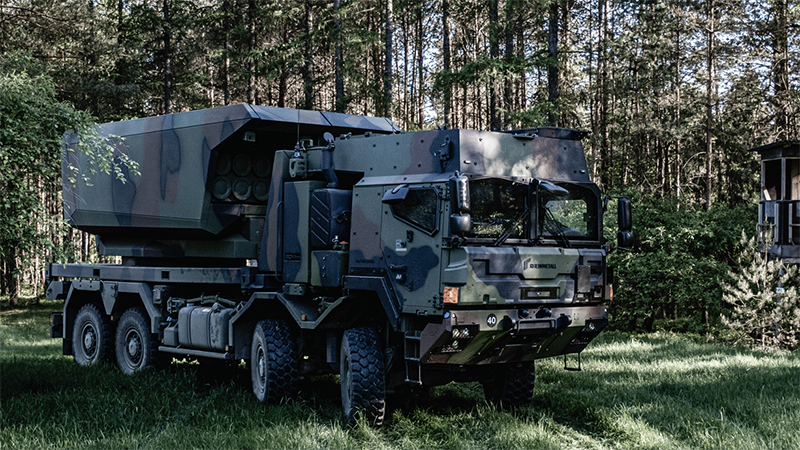
Another contender is the K239 Chunmoo system from South Korea's Hanwha, which has gained popularity mainly thanks to deliveries to Poland. Its modular design allows it to use missiles of several different calibers, namely 130 mm, 230 mm, 239 mm, 280 mm, and 600 mm. The latter value refers to KTSSM series ballistic missiles, which can be characterized as roughly equivalent to the ATACMS design and offer a range of 290 km. The range of smaller missile types varies between 36 and 160 km, depending on the caliber. Two containers with identical or different types of missiles can be placed in the modular launcher. In addition to the South Korean army, two Arab countries and Poland have also introduced these systems. However, this is similar to the case of HIMARS rocket launchers, as most of the K239 Chunmoo rocket launchers used by the Polish army will be mounted on a domestic Jelcz chassis.

The third and currently most successful candidate worldwide is the PULS (Precise & Universal Launching System) rocket system, developed by the Israeli company Elbit Systems. It is essentially a modernized version of the Lynx rocket launcher, developed by IMI and used by several foreign armies. The PULS system was also introduced by the Israeli army under the name Lahav and has attracted a long list of export orders. It can hold two containers, allowing it to fire missiles of four different calibers. The first type of container is designed for eighteen 122 mm rockets with a range of up to 40 km, while the second is used for thirteen 160 mm rockets with a range of 45 km. Both caliber missiles are also available in terminal guidance versions. The third type is designed for four 306 mm EXTRA missiles with a range of 150 km, and finally, the last one is for two 370 mm Predator Hawk missiles with a range of 300 km.
Similar to its competitors, the PULS system combines a classic rocket launcher and a platform for launching tactical or operational-tactical ballistic missiles. In addition, it has recently gained the ability to launch "suicide" drones, or Elbit SkyStriker loitering munitions, which can hit targets at a distance of over 100 km. In addition to the Israeli army, PULS complexes have already been ordered by Denmark, Morocco, Germany, the Netherlands, Peru, Serbia, and Thailand, among others, and there are reports of other interested parties. The willingness of the manufacturer to install the system on various chassis has undoubtedly contributed significantly to the success of the PULS system. Lahav systems in the Israeli army are mounted on Oshkosh chassis, while those for Germany use Iveco Trakker chassis, but the most common mounting is on a six-wheel Tatra Force chassis. The chassis from Kopřivnice has been chosen for PULS systems by the armies of Denmark, Morocco, Serbia, and Thailand, among others.

Elbit Systems is also willing to provide technology transfers, as demonstrated by Thailand, whose army has introduced a system called D11A, developed by the local arms industry in cooperation with Israel. There is also the possibility of transferring serial production of missiles, which is highly interesting from the perspective of Central European countries. The Slovak company MSM Group is one of the manufacturers of 122 mm artillery rockets (including those with an extended range of 40 km), and therefore could certainly participate in the production of rockets for PULS systems. A huge advantage of the Israeli system is the fact that it is already mounted on a Tatra Force chassis. The M142 HIMARS and K239 Chunmoo systems can also be installed on other chassis, as the current example of Poland clearly shows, but this process would inevitably require time and money, while the PULS type is, so to speak, "ready" from the point of view of the Czech army.
The Czech Army should definitely proceed with the purchase of modern artillery rocket launchers, as experience from Ukraine shows that these remain highly effective weapons. Thanks to a wide range of ammunition types, they can take out all sorts of targets, and their most powerful rockets, with a range of up to 300 km, allow for precise strikes at operational depth. There are several types of rocket launchers with top performance on the market, among which the Israeli PULS system seems to be the best option for the Czech Army. In addition to its range of rockets, it is already installed on the Czech Tatra Force chassis and can also launch 122 mm caliber rockets manufactured by the Slovak company MSM Group. The acquisition of these rocket systems would therefore also represent a significant opportunity for the domestic arms industry.
